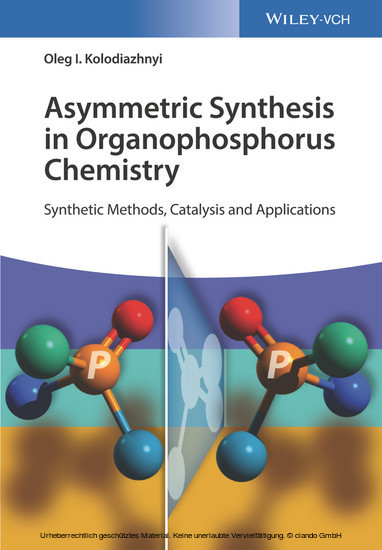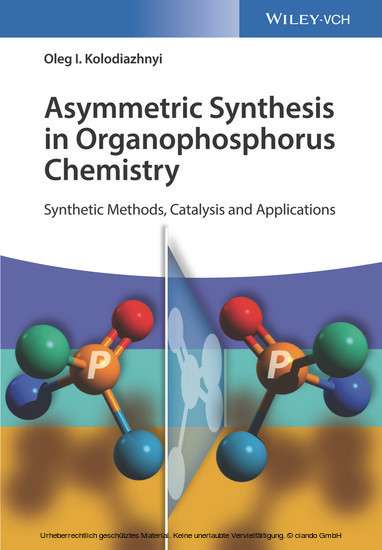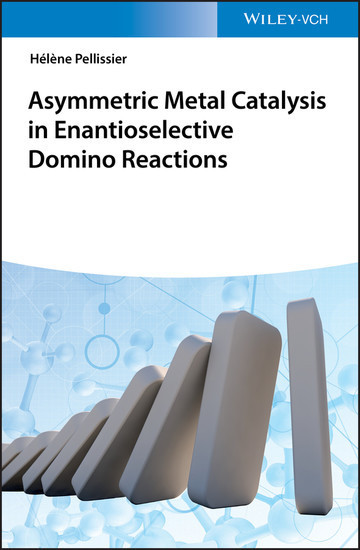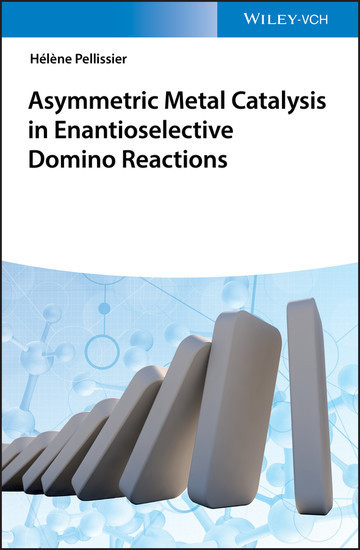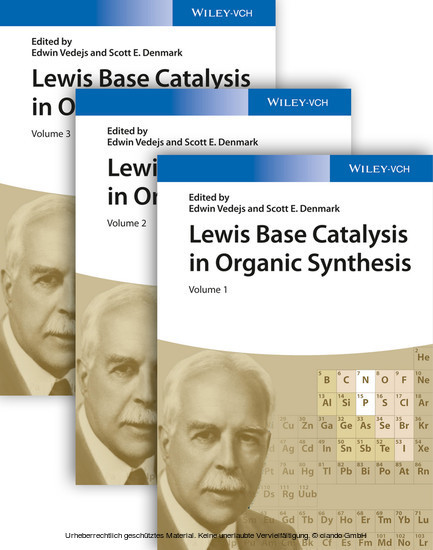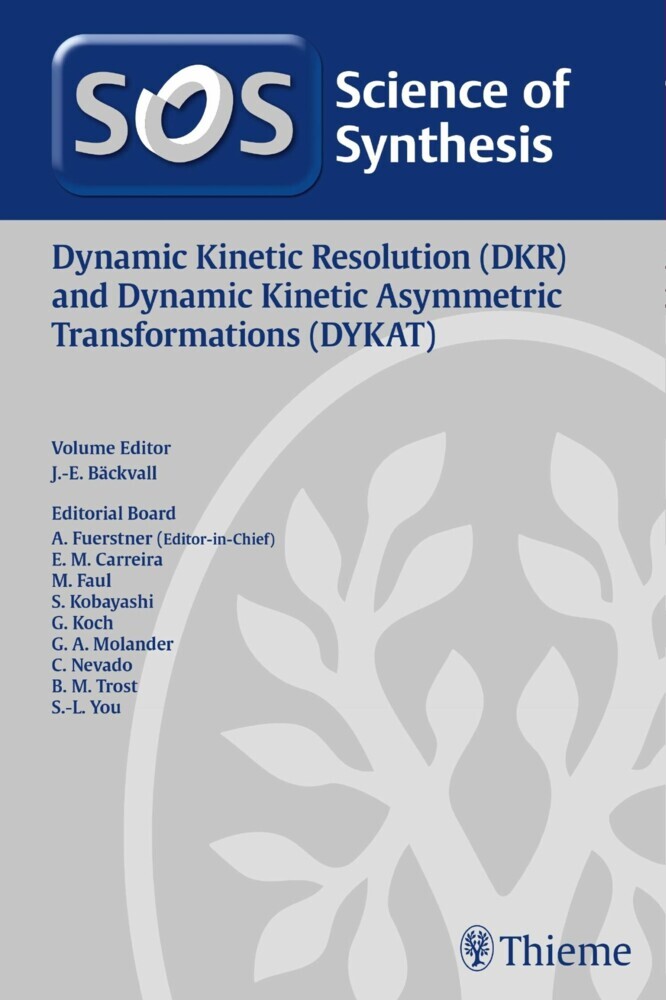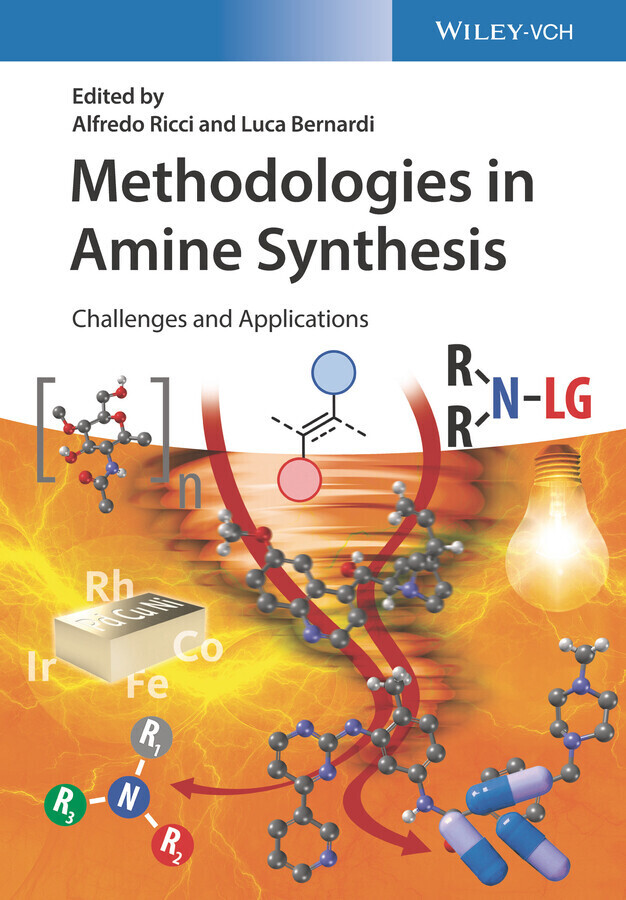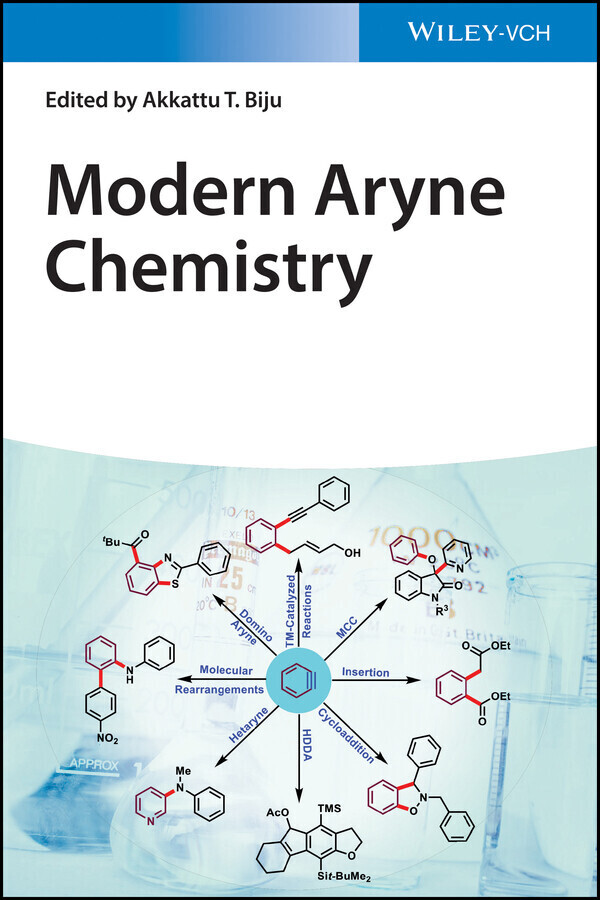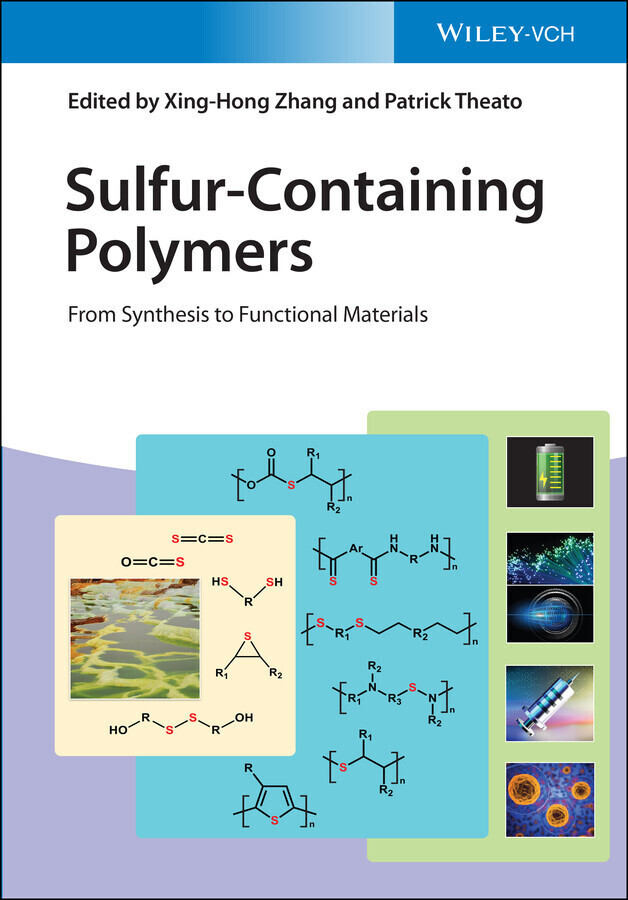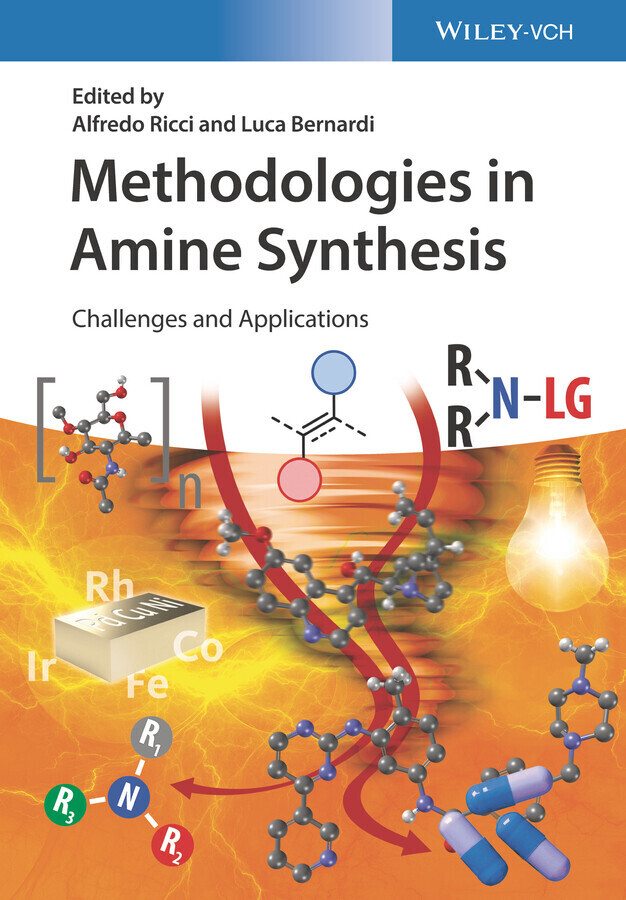Asymmetric Synthesis in Organophosphorus Chemistry
Synthetic Methods, Catalysis, and Applications
Asymmetric Synthesis in Organophosphorus Chemistry
Synthetic Methods, Catalysis, and Applications
Authored by one of the leading experts in the field, this is the only comprehensive overview of chiral organophosphorus compounds, from asymmetric synthesis to catalysis and pharmacological applications.
As such, this unique reference covers the chemical background as well as spectroscopical analysis of phosphorus compounds, and thoroughly describes all the various synthetic strategies for these substances. Metal-, organo- and biocatalyzed reactions for the introduction of phosphorus are explained as are asymmetric oxidation and reduction methods for the preparation of all possible oxidation states of phosphorus. The text also includes industrial applications for these compounds.
Of particular interest to chemists working in the field of asymmetric synthesis, as well as to the pharmaceutical industry due to the increasing number of phosphorous-containing drugs.
Professor Oleg I. Kolodiazhnyi is head of the Department of Physiologically Active Phosphorus Compounds, Institute of Bioorganic Chemistry and Petrochemistry, National Academy of Sciences of Ukraine (NASU) since 1990. He obtained his Ph.D. and Doctor of Sciences degree from the Kiev Institute of Organic Chemistry, NASU. In 1995 he became Professor of Chemistry and was elected as member-correspondence of the National Academy of Sciences of Ukraine in 2013.
His current interest is chemistry of organophosphorus compounds, highly reactive phosphorus compounds and reagents. Over the last years, Kolodiazhnyi has been studying the asymmetric synthesis, stereochemistry of organophosphorus compounds and synthesis of biologically active compounds. He is author of 500 publications and 28 patents, including three monographs, a number of reviews and chapters. He is currently member of the editorial boards of the 'Journal of Phosphorus, Sulfur, Silicon and Related Elements (USA)' and member of editorial board of 'Russian Journal of General Chemistry' (St. Petersburg). In 2014 he was awarded by State Premium of Ukraine in Science and Technology for eminent achievements in Organophosphorus chemistry. He is also prize-winner of the Kiprianov Premium on Organic Chemistry of Ukrainian Academy of Science and numerous other scientific awards.
As such, this unique reference covers the chemical background as well as spectroscopical analysis of phosphorus compounds, and thoroughly describes all the various synthetic strategies for these substances. Metal-, organo- and biocatalyzed reactions for the introduction of phosphorus are explained as are asymmetric oxidation and reduction methods for the preparation of all possible oxidation states of phosphorus. The text also includes industrial applications for these compounds.
Of particular interest to chemists working in the field of asymmetric synthesis, as well as to the pharmaceutical industry due to the increasing number of phosphorous-containing drugs.
Professor Oleg I. Kolodiazhnyi is head of the Department of Physiologically Active Phosphorus Compounds, Institute of Bioorganic Chemistry and Petrochemistry, National Academy of Sciences of Ukraine (NASU) since 1990. He obtained his Ph.D. and Doctor of Sciences degree from the Kiev Institute of Organic Chemistry, NASU. In 1995 he became Professor of Chemistry and was elected as member-correspondence of the National Academy of Sciences of Ukraine in 2013.
His current interest is chemistry of organophosphorus compounds, highly reactive phosphorus compounds and reagents. Over the last years, Kolodiazhnyi has been studying the asymmetric synthesis, stereochemistry of organophosphorus compounds and synthesis of biologically active compounds. He is author of 500 publications and 28 patents, including three monographs, a number of reviews and chapters. He is currently member of the editorial boards of the 'Journal of Phosphorus, Sulfur, Silicon and Related Elements (USA)' and member of editorial board of 'Russian Journal of General Chemistry' (St. Petersburg). In 2014 he was awarded by State Premium of Ukraine in Science and Technology for eminent achievements in Organophosphorus chemistry. He is also prize-winner of the Kiprianov Premium on Organic Chemistry of Ukrainian Academy of Science and numerous other scientific awards.
1;Cover;1 2;Title Page;5 3;Copyright;6 4;Dedication;7 5;Contents;9 6;Preface;13 7;Abbreviations;15 8;Chapter 1 Fundamentals of the Stereochemistry of Organophosphorus Compounds;17 8.1;1.1 Historical Background;17 8.2;1.2 Some Common Definitions in Stereochemistry;20 8.3;1.3 Determination of Enantiomer Composition;23 8.3.1;1.3.1 Method of Nuclear Magnetic Resonance;24 8.3.1.1;1.3.1.1 Chiral Solvating Agents;24 8.3.1.2;1.3.1.2 Complexes of Metals (Shift Reagents);26 8.3.1.3;1.3.1.3 Chiral Derivatizing Agents for NMR;27 8.3.2;1.3.2 Chromatographic Methods of Analysis;30 8.3.2.1;1.3.2.1 Gas Chromatography;31 8.3.2.2;1.3.2.2 Liquid Chromatography;32 8.4;1.4 Determination of the Absolute Configuration;33 8.4.1;1.4.1 X-ray Crystal Analysis;33 8.4.2;1.4.2 Method of Chemical Correlation;35 8.4.3;1.4.3 The Assignment of Absolute Configuration by NMR;35 8.5;1.5 Asymmetric Induction and Stereochemistry;40 8.5.1;1.5.1 Asymmetric Induction;40 8.5.2;1.5.2 Asymmetric Synthesis;41 8.5.3;1.5.3 Asymmetric Transformation;41 8.5.4;1.5.4 An Enantioselective Reaction;41 8.5.5;1.5.5 Enantioselective Synthesis;41 8.6;1.6 Summary;42 8.7;References;42 9;Chapter 2 Asymmetric Synthesis of P-Chirogenic Phosphorus Compounds;51 9.1;2.1 Introduction;51 9.2;2.2 Low-Coordinated Phosphorus Compounds;52 9.3;2.3 Trivalent Tricoordinated Phosphorus Compounds;57 9.3.1;2.3.1 Configuration Stability of P(III)-Compounds;57 9.3.2;2.3.2 Asymmetric Nucleophilic Substitution at P (III);59 9.3.2.1;2.3.2.1 Secondary Alcohols as Chiral Auxiliaries;61 9.3.2.2;2.3.2.2 Optically Active Amines as Chiral Auxiliaries;70 9.3.2.3;2.3.2.3 Ephedrine as Inductor of Chirality at P(III);74 9.3.3;2.3.3 Asymmetric Oxidation of P(III) Compounds;83 9.3.4;2.3.4 Asymmetric Electrophilic Substitution at P(III);84 9.3.4.1;2.3.4.1 Asymmetric Michaelis-Arbuzov Reaction;86 9.4;2.4 Pentavalent P(IV)-Phosphorus Compounds;87 9.4.1;2.4.1 Introduction;87 9.4.2;2.4.2 Nucleophilic Substitution Reactions;88 9.4.2.1;2.4.2.1 Nucleophilic Substitution at P(IV) with Chiral Alcohol;90 9.4.2.2;2.4.2.2 Nucleophilic Substitution at P(IV) with Chiral Amines;94 9.5;2.5 Chiral P(V) and P(VI) Phosphorus Compounds;96 9.6;2.6 Summary;102 9.7;References;103 10;Chapter 3 Phosphorus Compounds with Chiral Side-Chain Centers;117 10.1;3.1 Introduction;117 10.2;3.2 Asymmetric Induction in Side Chains;118 10.2.1;3.2.1 Transfer of Chirality from Phosphorus to Other Centers;119 10.2.1.1;3.2.1.1 Chiral Phosphorus-Stabilized Anions;119 10.2.1.2;3.2.1.2 1,2-Asymmetric Induction;121 10.2.1.3;3.2.1.3 1,4-Asymmetric Induction;123 10.3;3.3 Enantioselective Olefination;129 10.4;3.4 Stereoselective Addition of Phosphorous Nucleophiles to C=X Bonds;133 10.4.1;3.4.1 Phospha-Aldol Reaction;135 10.4.2;3.4.2 Phospha-Mannich Reaction;146 10.4.3;3.4.3 Phospha-Michael Reaction;158 10.5;3.5 Asymmetric Reduction;163 10.6;3.6 Asymmetric Oxidation;168 10.7;3.7 C-Modification;172 10.8;3.8 Asymmetric Cycloaddition;173 10.9;3.9 Multiple Stereoselectivity;175 10.10;3.10 Summary;185 10.11;References;186 11;Chapter 4 Asymmetric Catalysis with Metal Complexes;203 11.1;4.1 Introduction;203 11.2;4.2 Asymmetric Catalytic Hydrogenation and Other Reactions of Reduction;204 11.2.1;4.2.1 Hydrogenation of C=C Phosphorus Compounds;204 11.2.2;4.2.2 Hydrogenation of C=O Phosphorus Compounds;216 11.3;4.3 Asymmetric Reduction and Oxidation;219 11.3.1;4.3.1 Reduction of C=O, C=N, and C=C bonds;220 11.3.2;4.3.2 Asymmetric Oxidation;226 11.4;4.4 Electrophilic Asymmetric Catalysis;227 11.4.1;4.4.1 Catalytic Electrophilic Substitution at the Phosphorus Atom;228 11.4.1.1;4.4.1.1 Alkylation and Arylation of P(III) Compounds;229 11.4.2;4.4.2 Catalytic Electrophilic Substitution in a Side Chain;233 11.4.2.1;4.4.2.1 Alkylation;233 11.4.2.2;4.4.2.2 Halogenation;235 11.4.2.3;4.4.2.3 Amination;237 11.5;4.5 Nucleophilic Asymmetric Catalysis;239 11.5.1;4.5.1 Asymmetric Addition of Phosphorus Nucleophiles to Multiple Bonds;239 11.5.1.1;4.5.1.1 Phospha-Aldol Reaction;240 11.5.1.2;4.5.1.2
Kolodiazhnyi, Oleg I.
| ISBN | 9783527341511 |
|---|---|
| Artikelnummer | 9783527341511 |
| Medientyp | E-Book - PDF |
| Copyrightjahr | 2016 |
| Verlag | Wiley-VCH |
| Umfang | 392 Seiten |
| Sprache | Englisch |
| Kopierschutz | Adobe DRM |

